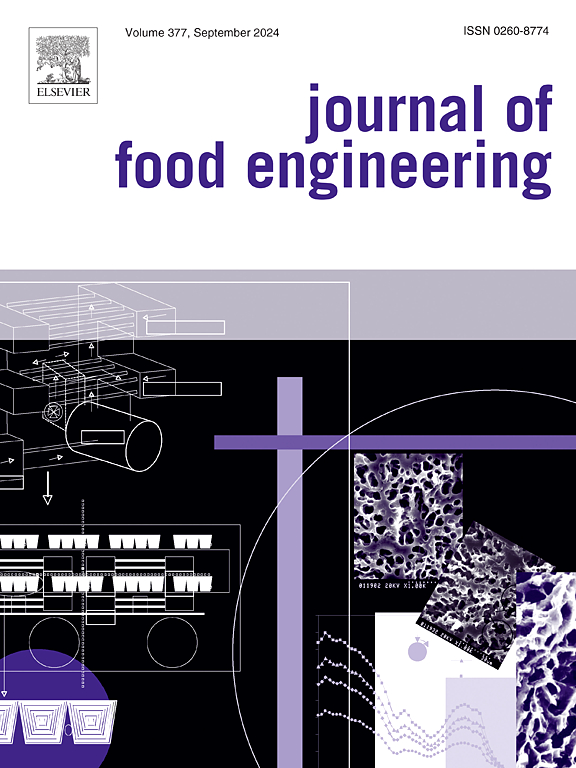果品保鲜用光催化抗菌g-C3N4/PVA薄膜
IF 5.8
2区 农林科学
Q1 ENGINEERING, CHEMICAL
引用次数: 0
摘要
随着对食品安全和可持续包装的需求不断增长,抗菌和环境可持续材料的创造已成为一个关键的研究重点。本研究制备了一种聚乙烯醇(PVA)薄膜,该薄膜与可见光响应的石墨氮化碳(g-C3N4)相结合,具有良好的抗菌性能。复合膜对鲍曼不动杆菌、金黄色葡萄球菌和大肠杆菌的光催化抑菌效率分别为99.99%、88.26%和98.33%。对g-C3N4进行湿球磨处理,显著提高了膜的力学性能、抗水蒸气渗透性、抗紫外线性和抗菌性能,同时降低了亲水性。此外,该薄膜在草莓保鲜方面表现出显著的效果,在环境条件下可延长保质期至96小时,而聚乙烯(PE)和纯聚乙烯醇(PVA)薄膜分别为48小时和72小时。重要的是,可回收复合材料在多次重复使用后仍保持其机械完整性和抗菌效率。本研究为高效、可持续和环保的食品包装材料的开发提供了创新的见解。本文章由计算机程序翻译,如有差异,请以英文原文为准。

Photocatalytic-antimicrobial g-C3N4/PVA films for fruit preservation
With rising demand for food safety and sustainable packaging, the creation of antimicrobial and environmentally sustainable materials has become a critical research focus. In this study, a polyvinyl alcohol (PVA) film incorporated with visible-light-responsive graphitic carbon nitride (g-C3N4) was fabricated, exhibiting remarkable antimicrobial performance. The composite film achieved photocatalytic antimicrobial efficiencies of 99.99 % against Acinetobacter baumannii, 88.26 % against Staphylococcus aureus, and 98.33 % against Escherichia coli. The g-C3N4 was treated via wet ball milling, which significantly enhanced the film's mechanical properties, water vapor impermeability, UV resistance, and antimicrobial performance while reducing hydrophilicity. Additionally, the film demonstrated notable effectiveness in strawberry preservation, extending shelf life to 96 h under ambient conditions, compared to 48 and 72 h for polyethylene (PE) and pure PVA films, respectively. Importantly, the recyclable composite retained its mechanical integrity and antimicrobial efficiency after multiple reuse cycles. This study provides innovative insights into the development of efficient, sustainable, and environmentally conscious food packaging materials.
求助全文
通过发布文献求助,成功后即可免费获取论文全文。
去求助
来源期刊

Journal of Food Engineering
工程技术-工程:化工
CiteScore
11.80
自引率
5.50%
发文量
275
审稿时长
24 days
期刊介绍:
The journal publishes original research and review papers on any subject at the interface between food and engineering, particularly those of relevance to industry, including:
Engineering properties of foods, food physics and physical chemistry; processing, measurement, control, packaging, storage and distribution; engineering aspects of the design and production of novel foods and of food service and catering; design and operation of food processes, plant and equipment; economics of food engineering, including the economics of alternative processes.
Accounts of food engineering achievements are of particular value.
 求助内容:
求助内容: 应助结果提醒方式:
应助结果提醒方式:


